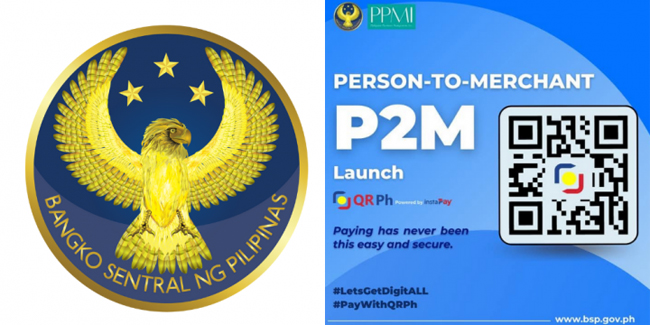BSP officially launched QR Ph P2M digital payment stream.
BSP – The Bangko Sentral ng Pilipinas officially launched QR Ph P2M digital payment stream.

Because of the successful launch and adoption of the QR Ph P2P (Person-to-Person) facility, the QR Ph P2M stream extended the payment use case of QR Ph in order to enable digital payments between merchants and customers.
According to the central bank, QR Ph P2M provided an easy way to pay for merchants’ services and products using “Quick Response” (QR) technology.
It was initiated by Bangko Sentral ng Pilipinas and Philippine Payments Management, Inc. (PPMI) and was considered a milestone in the country’s journey towards a cash-lite economy.
The central bank shared that from 7 payment service providers that joined the pilot launch last April 2021, there were at least 12 participating institutions as the system went into a full commercial launch and more payment service providers were expected to join in the coming months.
A QR code (short for “Quick Response code”) was a two-dimensional image-based bar code that’s capable of holding large amounts of information.
QR codes stored information using patterns of white spaces and black dots, arranged in a square grid. It can be read by a smartphone QR scanner or mobile device that’s equipped with a bar-code reader.
READ ALSO:
The central bank noted that QR technology has emerged as the most expedient means of payment since it essentially entailed code scanning which was faster and easier to do than bringing out a card, dipping, tapping, or swiping it, and signing a charge slip in most cases.
Yugatech reported that aligned with the Europay-Mastercard VISA (EMV) standard, the global standard for secure payments, QR Ph unified different domestic cashless payment schemes that make use of the QR code as a form factor.
As such, QR Ph allowed a safe and quick method to pay, transfer to and receive funds from other bank and e-money accounts in the country.
According to BSP, with QR technology, small entrepreneurs need not invest in costly equipment in order to capture electronic data.
Instead, merchants only needed to print the QR code that their respective payment service providers will generate for them, display those QR codes, and obtain payments by simply asking their customers to scan the QR codes.
For more news and updates, you may feel free to visit this site more often. You may also visit Newspapers.ph via our official Facebook page and YouTube channel.
